In movement study of a standard North American strip-search procedure, Francisco-Fernando Granados gambols through a codified gestural sequence: “empty pockets … remove clothing … bend forward, spread buttocks, squat, cough.” The exercise produces intense exposure, not only of the artist’s body, but also of the punitive, invasive, and often violent systems that restrict how bodies move through the social world. In conversation about the 2012 work at a conference this past fall, veteran performance artist Johanna Householder remarked that her own body perhaps best communicated her understanding of the piece and its impact: she was shaking.
While they may represent different generations of performance art – Householder began making performance in 1975 and Granados in 2005 – these two artists share a great deal in terms of their relationships to the field; both are members of the enduring and consistently innovative Toronto-based collective 7a*11d, both engage in curatorial practices, and both participate in building artistic futures through their academic and teaching work. Over a few weeks, Householder, Granados, and I discussed some of these activities, as well as their commitments to fostering exposure, in all its definitions, for performance art. And to riff on art historian John Paul Ricco’s use of the word, this may entail opening performance to the exterior, to whatever is outside.
What’s outside appears increasingly volatile. The year recently past was marked by political upheaval, and the one now begun feels dangerously uncertain. Pooling creative resources and generational experiences seems to offer a set of strategies for moving though such terrain, and using performance to expose ourselves and our precarious surroundings, feels especially pressing.
I want to ask about frameworks, institutions, spaces, and how you negotiate your position in relation to the larger arts infrastructure and institutional topography of Toronto – how do you envision yourselves, and the collective of which you are both a part, within that?
Johanna Householder: I don’t [laughs]. And that might sound naïve and arrogant at the same time. To me, and I’m maybe very old-school in this sentiment, one of the driving fundaments of performance art is it’s anti-market, it’s against the market, it’s not interested in the market.
But in terms of how we interact with institutions, I think it’s the institutions that have come around to us. And I think the Art Gallery of Ontario (AGO) has been trying hard in the last few years to engage a different public, and has been using performance as a tool to do that.
Right. A notable example might be something like having Rebecca Belmore’s performance for Nuit Blanche.
JH: Sure, and then also the First Thursday kinds of events [monthly parties at the AGO]. But those are things I’m not particularly down with. I don’t like us being party entertainment. It’s like Joseph Ravens said, when he couldn’t get his license for Defibrillator, his performance gallery in Chicago, and they wanted to give him a license for an adult entertainment site. He said, I don’t know what was more insulting, the “adult” or the “entertainment.”
That reminds me of something the art historian Claire Bishop wrote about dance in the museum, that it tends to be used as this sort of “presentist” spectacle. You know, it’ll be placed in the lobby area, to attract attention, and enliven the space.
Francisco Fernando-Granados: I feel like performance art, and people who chose to work in experimental and non-commercial ways, and who maintain a commitment to that, will continue to do so. It’s a bit of a double-bind: you’re not doing it for the museum, but then, of course, when the museum comes knocking, there’s no point in not claiming that space.
JH: As Lillian Allen said at the opening of the Tributes and Tributaries (2016-17) show: I’ve usually been on the outside protesting the AGO. It’s nice to be on the inside.
FFG: And to be invited to come to the inside doesn’t take away your right to protest the institution when it needs to be protested. I think those of us who work in this way are aware of the fact that being a part of the institution does not preclude you from being critical of it, and from sometimes having to go right outside and say something about what’s happening.
Francisco, your introduction to 7a*11d was as a volunteer at the 2010 iteration of the festival. And Johanna, you were one of the group’s founders. Do you feel like you come at things from different generational perspectives? Broadly speaking, I’m really interested in intergenerational collaborations, and how things modulate between generations.
FFG: How do you see me Johanna [laughs]?
Is he the young punk? Is he the ingénue?
JH: No, no, I still maintain the young punk position. I’m the young punk, and Francisco’s the grown-up.
You know, the collective is interesting, and it’s gone through mutations. Like many collective processes, it’s largely unarticulated. Of course, we all have our strengths.
Also [performance artist and 7a*11d collective member] Tanya Mars and I, we both teach, so we are in touch with younger generations of artists. Working across generations isn’t really about staying current, because if you teach, you have to stay current. You have to know what’s happening, and you have to go out there and see stuff.

“Movement Studies: Johanna Householder and Francisco-Fernando Granados in Conversation,” University of Toronto Mississauga, September 18, 2016. Photo: Sam Holmes.
FFG: And we’re all peers. There is something kind of deliciously anarchic about the fact that we don’t have a pre-set structure, we don’t have a premeditated methodology.
JH: And we also don’t really ever tell each other no. If someone really cares about an artist, or a project, or about something else we could do with our spare time, we don’t say no to each other.
Another thing I’m curious about is the development of the performance art audience, which I think has changed a great deal over time.
I’m thinking about one of my favorite early moments of performance art in pop culture. There’s a Sex and the City episode, from I want to say 2003, which I actually watched in a university seminar – with the faux-Marina Abramović piece.
JH: With Baryshnikov!
FFG: Yes, and The House with the Ocean View (2002).

Still from Sex and the City, “One.” Directed by David Frankel. Written by Michael Patrick King. Darren Star Productions. Aired September 14, 2003. Image sourced from buzzfeed.com.

Marina Abramovic, “House With the Ocean View,” 2002. Performance at Sean Kelly Gallery. Image sourced from vimeo.com.
Precisely. And in that moment, Carrie Bradshaw expresses what I think we’re meant to understand as the layperson’s relationship to performance art. By which I mean, she kind of calls bullshit on the whole thing, suggesting that the artist in this particular performance runs out in the night to grab a burger, etc. So the episode characterizes the early-2000s as a moment when the mainstream may have viewed performance art as a field that took itself too seriously, or wasn’t approachable for most.
Of course, fast-forward a decade or more, and the person on whom this joke is based is now one of the most well-recognized artists of our time. Certainly after The Artist is Present (2010), more people know who Marina Abramović is, and to an extent, what the field she works in comprises, than ever before.
And this sort of feels like an anecdotal microcosm of performance art’s trajectory, and the changes in its relationship to mainstream media. This is my rather long way of asking how you’ve felt these shifts, both in Toronto and in the larger international performance artworld?
JH: Well, I would say that for the first three or four festivals 7a*11d mounted, it was not uncommon to have six people, or no one, at a performance. Ten people maybe?
So, it’s been a very slow, not-exactly-exponential growth. And I’m not sure whether to credit popular culture, or our own stick-to-it-ness. I don’t know.
I was very happy with our audience at this year’s festival, beyond the numbers – I find [the people] are quite astute, and they’re very mixed. It used to be that I would know everyone in the audience, on a first-name basis. So not actually knowing three-quarters of the audience is really fantastic.
FFG: I think, in part, it has to do with the range and diversity of artists that we bring in. We might bring in an artist from a specific country, and we might have a contingent who hears about that artist through the local multicultural media.
JH: Right, when we brought in Chaw Ei Thein, who is from Burma, we discovered that our space was in the heart of Little Burma here in Toronto, and the Burmese community showed up every day she was doing a durational piece at the Toronto Free Gallery.
In some ways that’s even more exciting than just generating audience. It’s audience-specific, and site-specific, and those specificities are really exciting.
FFG: And to think a little bit more about the pop culture question, I feel like it’s changed a lot very quickly. I think when I became interested in performance, it was just before The Artist is Present – before it really sort of went off. And you still had to go to the library and look for these books, and the references available were still quite canonical. You know, Yoko Ono, early Marina, hearing about Regina José Galindo winning the Golden Lion in Venice. And as your average undergraduate at an art university, it was much harder to break into the stream of who might be doing performance in your local arts community. For me, personally, I didn’t become a performance artist in an academic sense, I became a performance artist through a youth workshop that Irene Loughlin and Naufús Ramirez-Figueroa did, so there was a kind of nice undergroundness and alternativeness to performance, which I feel now has changed. You could say to someone at the time that you were doing performance and people would have no clue. I think now people have more of a reference. And I think as long as those of us who are in a position to do this insist on broadening the frame of performance history, and certainly talking about Yoko Ono and talking about Abramović, but also talking about Alison Knowles, and Esther Ferrer, and Rebecca Belmore, and Margaret Dragu, and Johanna Householder, and Tanya Mars … Really, as long as it doesn’t get reduced to that pop bracket. There is a very rich history that needs to be tapped, and needs to be institutionalized.
On the other hand, it’s funny how performance artists, themselves, or some performance artists, at least, have taken on this adult-slash-entertainment role. It’s curious to notice how, with certain artists, it’s sort of gone full circle. Rather than Madonna stealing from the underground performance artists, it’s the supposedly underground performance artists trying to make work like it’s a Madonna show. I haven’t thought about this enough to have a judgment on it, but it’s something I notice – that spectacle has entered in a way that hasn’t always been possible, because of the exposure and attention that performance has had.
I guess when we’re thinking about audience reception, the other thing that comes up a lot is this question of shock and reaction. It’s something that a lot of people graft onto performance art, ostensibly a medium that precipitates shock in a particular way.
I’m thinking of this wonderful book, which is Jennifer Doyle’s Hold It Against Me. One of its theses is that shocking or controversial ideas tend to supplant the actual meaning of a work in discussion about it, so that when we talk about a work that is labeled shocking, all we ever talk about is the controversy it generates, as opposed to the work itself. A very good historical example being everything surrounding the NEA Four, or something like Andres Serrano’s Piss Christ (1987), where, as another writer, Peggy Phelan, has noted, instead of talking about the aesthetics of the artwork, all people talk about is …
JH: The blasphemy.
Exactly.
JH: Or about tax dollars.
Right! And in the introduction to her book, Doyle writes at some length about Ron Athey. Mikiki, in his performance at this year’s 7a*11d festival, made a sort of passing joke, saying, “don’t worry, this isn’t an Athey moment,” as he was handling blood and talking about seropositivity [a term used in HIV/AIDS advocacy to refer to testing positive for HIV antibodies]. In spite of that caveat, the comparisons feel somewhat inevitable; these performances do have things in common. In fact, Doyle describes a friend’s reaction to an Athey performance at the Los Angeles club Sin-a-matic, writing “at the sight of so much blood she (like quite a few other audience members) passed out,” a phenomenon also present for Mikiki’s performance.
I’m curious about these reactions, and the reputation performance art has for prompting responses of a certain intensity. I’m wondering how you feel about these dynamics as organizers and, specifically, as curators? And given that curating comes from the Latin curare, to care, how do you care for spaces and encounters that have these important, yet difficult, reaction potentials?
FFG: Perhaps thinking specifically around what Mikiki’s performance was about, I’m reminded of Ricco’s notion of exposure. Certainly in Mikiki’s performance he was highlighting some of the ways in which queer bodies are exposed, and expose themselves, in front of an audience. But I think this is probably true of performance art in general, where it is an act of exposure. The artist exposes themselves, and the audience is exposed to the work. It’s much harder to walk away from than a Rothko. So in that sense, our curatorial role is not just to care for the artists or to care for the work, but also to care for our audience. Like with the folks who fainted, in spite of the fact that we could not have foreseen it, we tried to be on it.
And as an audience member, and maybe also as an audience member who is thinking particularly about the mechanics of a performance, that was quite clear. I saw a very subtle but very prompt delivery of water to one person, for example.
FFG: In a way it’s the difficulty of curating performance. But it’s also where the work is to simultaneously take care of the artist and the work, as well as the audience.
JH: The other thing I would say that we try to take care of is performance art itself. We want to curate the performance art that advances what it means to perform. You know, what is the theoretical territory that we’re in? And I would say that, for that reason, we have perhaps not curated, or have resisted curating, the artists who have a reputation that is solely based on shock, or largely based on shock. And that’s not to say that there hasn’t been bloodshed.
I think caring for the field is also what binds us together as a collective, because we are serious about it. We feel that performance has modalities of expression that are not available in any other art form, and that can address very deeply and sincerely the human condition. That’s what makes us want to keep working.
FFG: I think one of the things I’ve become less and less forgiving about as a performance art audience is the ratio between what a piece asks from you, and what it gives you. There is work that can ask nothing from you and give you so much, and there’s a wonderful generosity from it. There’s work that demands a lot from you and takes you on a hard journey, but delivers you to the other side. And then there’s self-indulgent work that asks you to do so much, and then just kind of leaves you feeling “is that it?”
I wanted to ask about another collective project you recently participated in, Johanna. Ame Henderson and Evan Webber’s performance encyclopedia (2016) assembled a group of artists, writers, and cultural workers, yourself included, to work together in both creating a body of knowledge around performance, and in performing a body of knowledge. As someone who has explored these forms of knowledge-making over several decades, in a wide range of collective forms (from the Clichettes, to 7a*11d, to this ad-hoc research unit at the AGO in November), do you have any insights as to how the body of knowledge that comprises, or circumscribes, performance, has changed? Or stayed the same? For better or worse, what is performance now that it wasn’t before? What has been added to the encyclopedia?
JH: When I began teaching performance there were literally a handful of books: and only two or three Canadian texts (AA Bronson and Peggy Gale; Chantal Pontbriand). And as well, performance art had already been declared dead.
I think it would be safe to say the body of knowledge has expanded exponentially alongside the knowledgeable bodies – if I can make that pun – that is, parallel to the bodies who were/are actually doing the physically present theorizing that performance requires. There is such a wealth of new knowledge, of subtle distinctions, genres, histories, types, styles, attitudes, angles, texts, and contexts – this is what makes it lively.
Of course, it has changed and stayed the same. There is – still – the thirst for Indigenous work, feminist queer racialized body-work, for transformative ritual, new socialities, politicized transgressions, pure poetics.
At the end of performance encyclopedia, we made a statement about the writing coming from the knowledge that each of us carries – [which I find] so interesting, that physical reference to carrying knowledge.
Francisco, you mentioned that your introduction to performance art took place outside of academic frameworks. Of course, now you, like Johanna, have ties to the academe. I wanted to talk with you a little more about that specific institutional framework. How does your relationship to pedagogy influence your curatorial practice? Do you have any concerns about dynamics of access and inclusion regarding the university as a space for performance art? And since we’ve discussed the importance of maintaining criticality when working within the art gallery or museum, would you say the same of the university?
FFG: For me, part of the impetus for being in the collective has to do with helping maintain the space that 7a*11d has carved out in the cultural ecology of the city, the country, and in the international performance art community. As a teacher, as somebody involved in mentoring younger artists, I want there to be spaces that support live, experimental, alternative practices, and that create connections between local practices and those happening in other places. And not just New York, Berlin, or some of the other common references that tend to dominate in art school curricula. The academe is one dimension of the artworld, and it has certainly become much more important in terms of forming artists and giving us a context, but it cannot be the only arena. In order for artistic pedagogical institutions to remain responsible to the public sphere, they need to be in touch with what is happening in communities outside the academe.
To turn briefly to the immediately political – shortly after November’s American election, Christian Viveros-Fauné wrote in Momus:
As a group that profoundly values free expression and also prizes difference and inclusivity, the artworld will, at long last, have to concern itself with more than the financial consequences of this presidential candidate’s victory on the stock and auction markets … It will also need to properly prepare for what is sure to be a forthcoming culture war the likes of which this country has never seen.
Of course, we have seen culture wars before, and indeed, in the ‘80s and ‘90s, performance art was at the center of these conflicts. In a similar vein, I want to follow-up on our discussion about the increased visibility and popularity of performance art today. What does the rising cultural presence of performance art mean in a moment of increasing conservatism in global politics? And what challenges and potentials do you see for the field in the precarious, and frankly very frightening political terrain we’re currently facing?
FFG: Performance has played and continues to play a crucial role in expanding the aesthetic field into a place where art can be used as an explicitly political tool. I think the culture wars of the ‘80s and ‘90s will offer up many lessons and cues as we in North America attempt to resist and contain the effects of what is to come. But the bringing-together of art and politics cuts both ways. It’s important not to turn this recent history that emerged as a contextual response to very specific political conditions (neo-conservatism, the AIDS Crisis, US intervention in Central America and other places in the world) into a canon that gets formalized as a set of easy-to-use conventions. Performance art is not an innocent form, [and] it’s not just the hero of the culture wars. Let’s remember that during the US primaries Michael Moore called Donald Trump a performance artist.
We as performance artists need to think about this characterization seriously, not just dismiss it. What is it about performance art that has allowed it to become not just a counter-cultural form, but also an accomplice of spectacle culture? We are caught in this conundrum as we go forward into this precarious time, and perhaps the only way to work through it is to continue to experiment, to think as we move, to figure out how to respond critically to a set of social and political circumstances many of us fear. It may be performance, but it may be something else, something we do not have a name for yet.

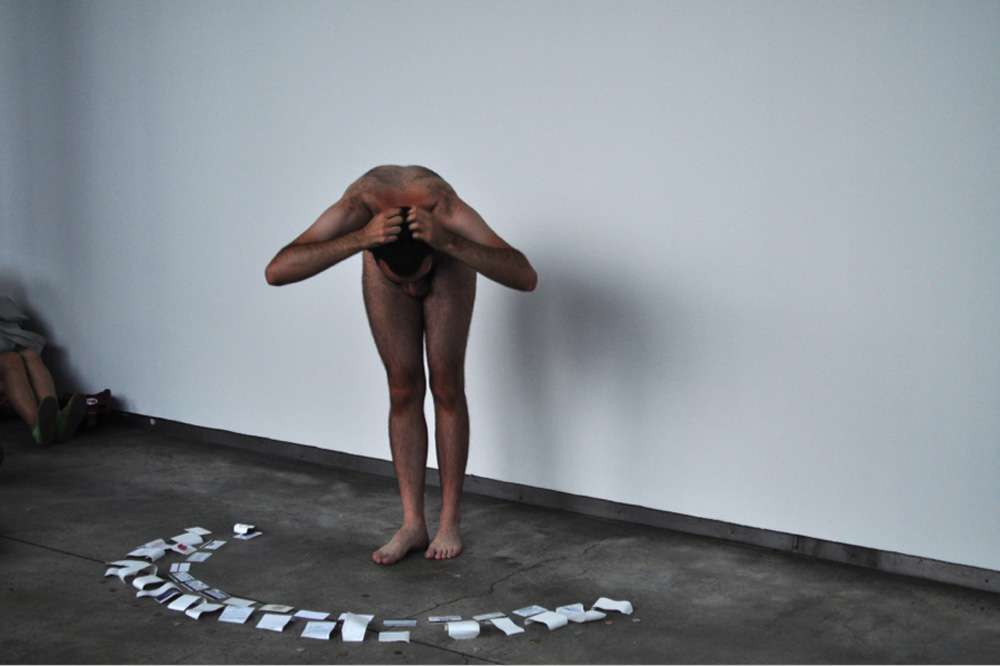


















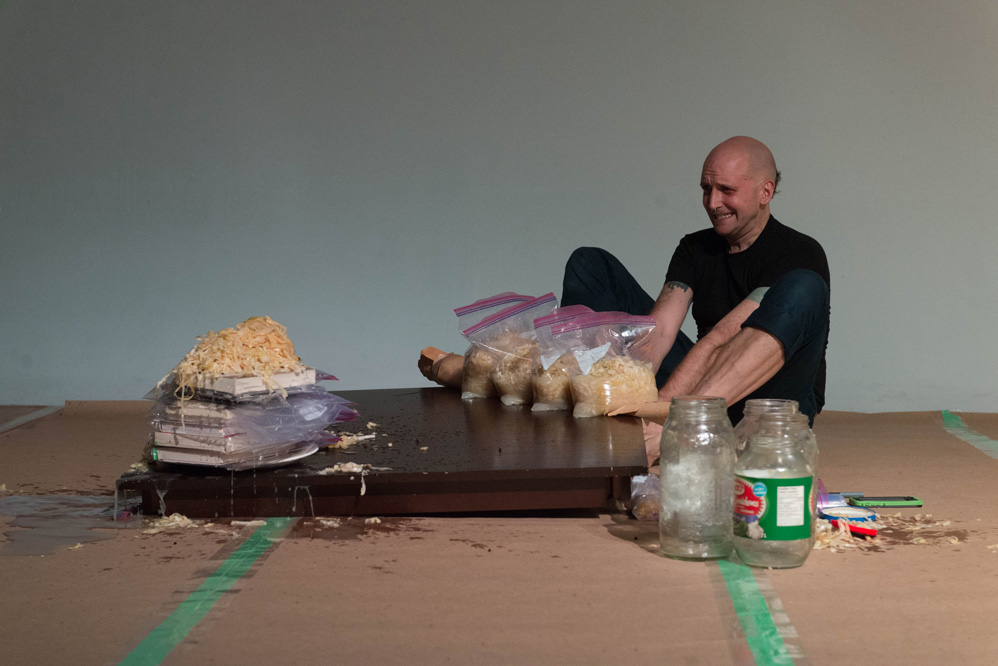
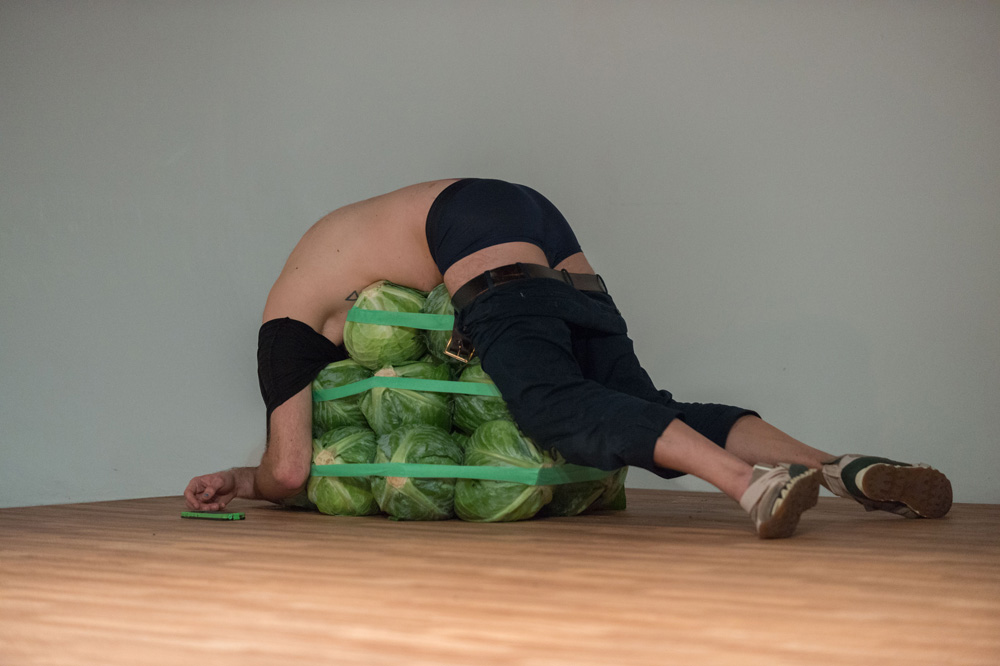
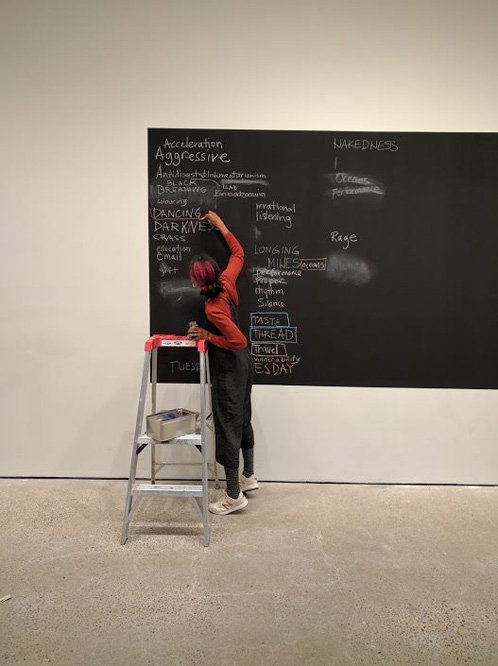

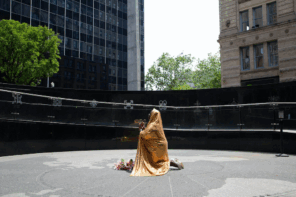


1 Comment